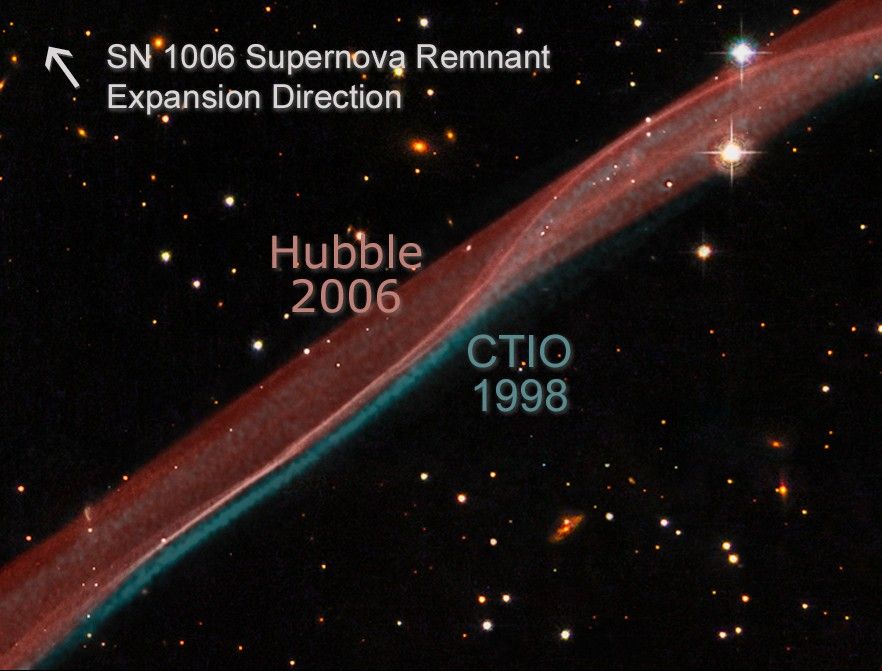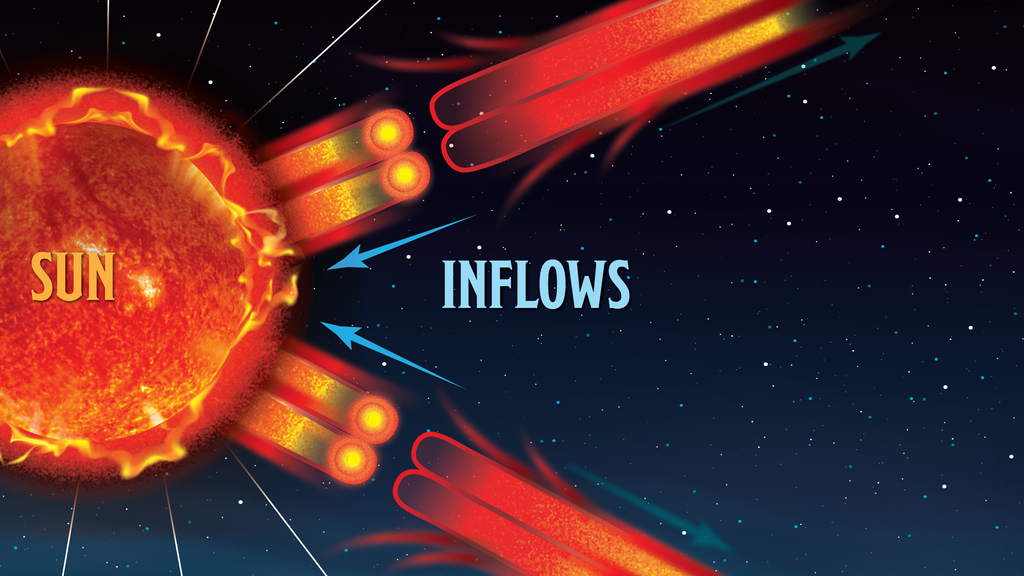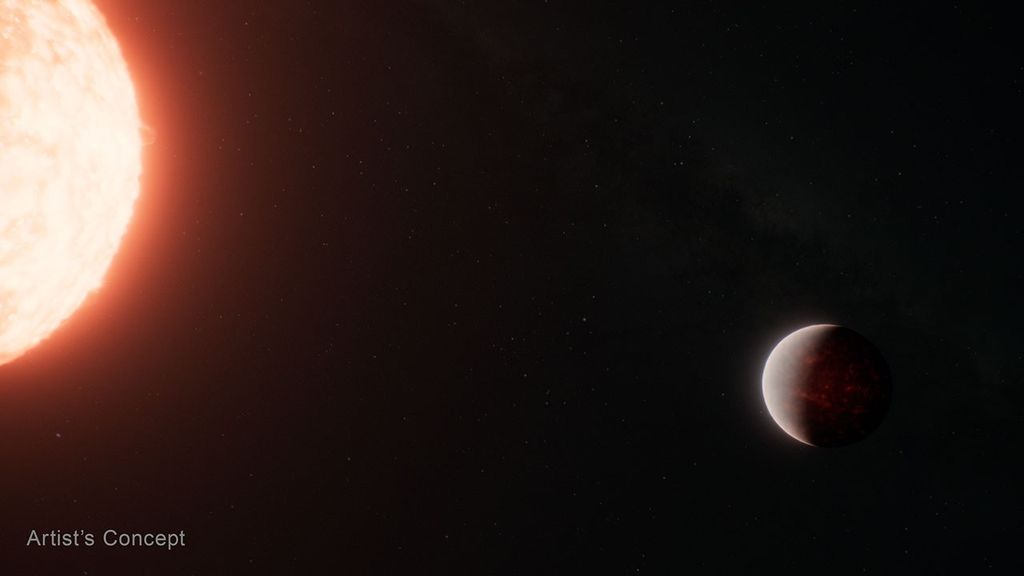1 min read
Full-shell Image of SN 1006 Showing Location of Hubble Observations

This image is a composite of visible (or optical), radio, and X-ray data of the full shell of the supernova remnant from SN 1006. The radio data show much of the extent that the X-ray image shows. In contrast, only a small linear filament in the northwest corner of the shell is visible in the optical data. The object has an angular size of roughly 30 arcminutes (0.5 degree, or about the size of the full moon), and a physical size of 60 light-years (18 parsecs) based on its distance of nearly 7,000 light-years. The small green box along the bright filament at the top of the image corresponds to the dimensions of the Hubble release image.
The optical data was obtained at the University of Michigan's 0.9-meter Curtis Schmidt telescope at the National Science Foundation's Cerro Tololo Inter-American Observatory (CTIO) near La Serena, Chile. H-alpha, continuum-subtracted data were provided by F. Winkler (Middlebury COllege) et al. The X-ray data were acquired from the Chandra X-ray Observatory's AXAF CCD Imaging Spectrometer (ACIS) at 0.5-3keV, and were provided by J. Hughes (Rutgers University) et al. The radio data, supplied by K. Dyer (NRAO, Socorro) et al., were a composite from the National Radio Astronomy Observatory's Very Large Array (NRAO/VLA) in Socorro, New Mexico, along with the Green Bank Telescope (GBT) in Green Bank, West Virginia. Data of the supernova remnant were blended on a visible-light stellar background created using the Digitized Sky Survey's Anglo-Australian Observatory (AAO2) blue and red plates.
About the Object
- R.A. PositionR.A. PositionRight ascension – analogous to longitude – is one component of an object's position.15h 2m 48.39s
- Dec. PositionDec. PositionDeclination – analogous to latitude – is one component of an object's position.-41° 54' 42.0"
- Object NameObject NameA name or catalog number that astronomers use to identify an astronomical object.SN 1006, SNR 327.6+14.6
- Release DateJuly 1, 2008
- Science ReleaseHubble Sees Stars and a Stripe in Celestial Fireworks
- Credit
Related Images & Videos

SN 1006 Supernova Remnant (Hubble)
A delicate ribbon of gas floats eerily in our galaxy. A contrail from an alien spaceship? A jet from a black-hole? Actually this image, taken by NASA's Hubble Space Telescope, is a very thin section of a supernova remnant caused by a stellar explosion that occurred more than...

SN 1006 Supernova Remnant Expansion Comparison
Comparison of visible hydrogen emission in the NW filament of SN 1006 in data taken at the CTIO 0.9m telescope (H-alpha, continuum-subtracted; Winkler, et al.) in 1998 (shown in green), and the Hubble ACS data (Raymond et. al) in 2006 (shown in red). The stellar background is...
Share
Details
Claire Andreoli
NASA’s Goddard Space Flight Center
Greenbelt, Maryland
claire.andreoli@nasa.gov





























